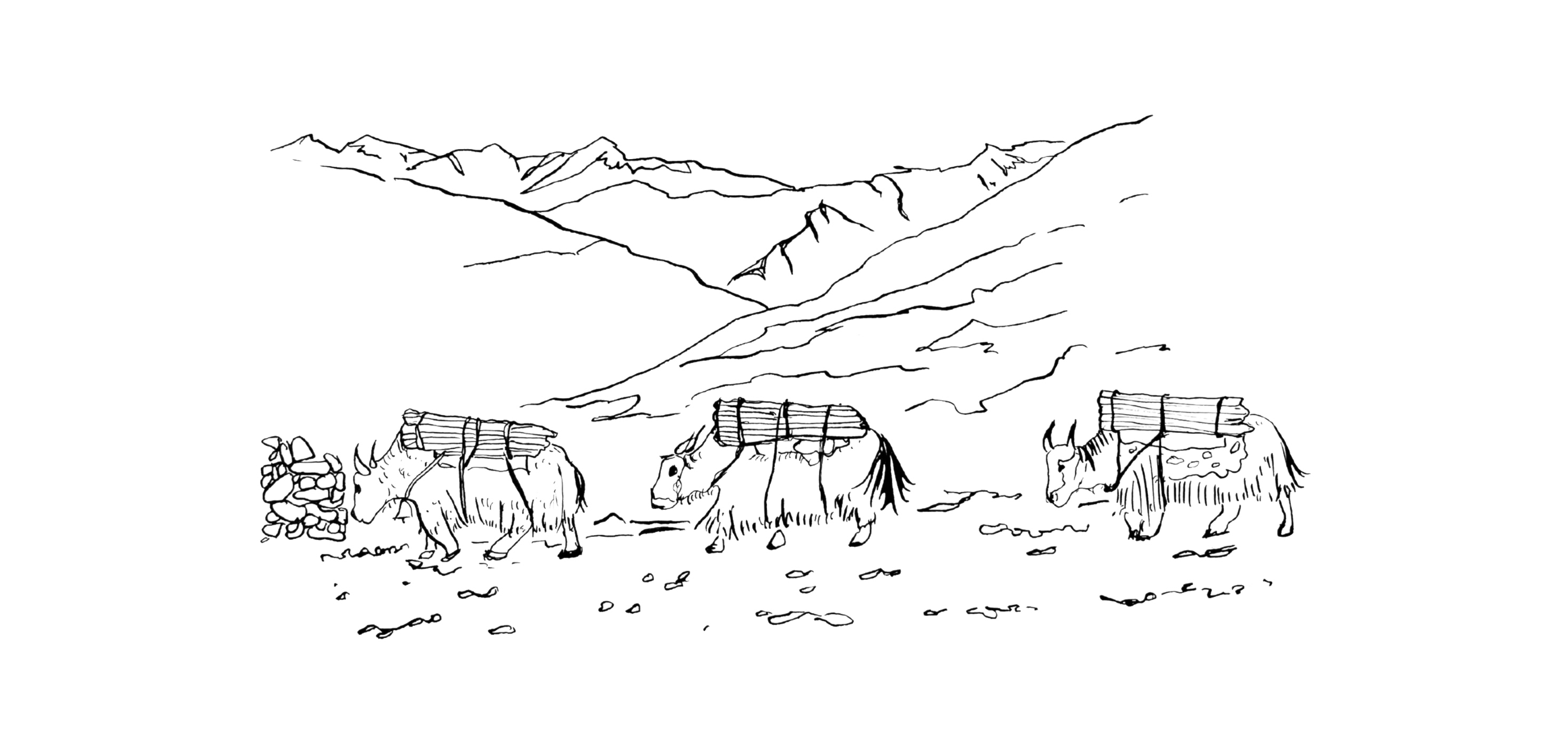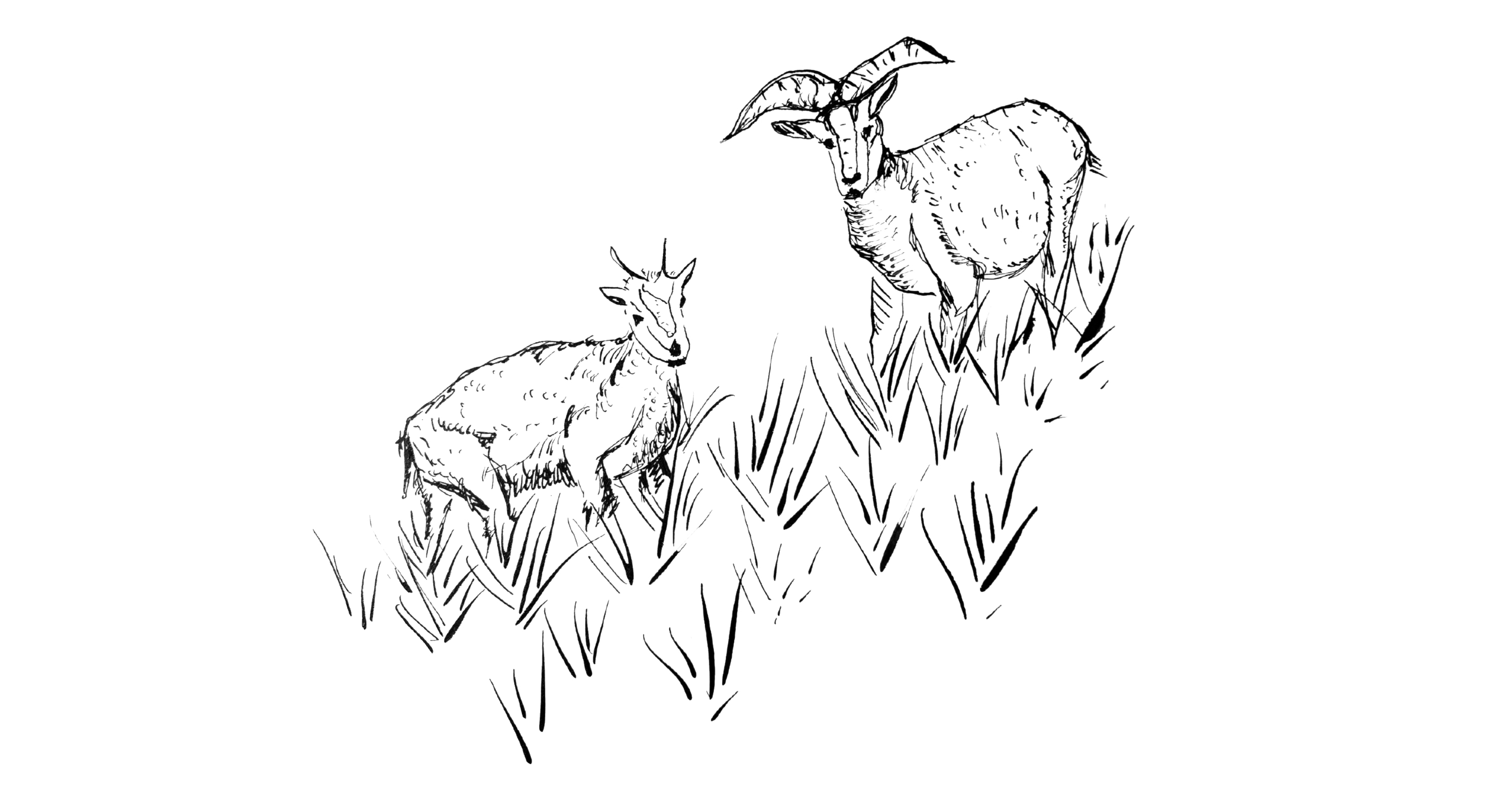Illustrated by Rebecca Gaal
A revitalizing new perspective on Earthcare from Pulitzer Prize finalist William deBuys.
In 2016 and 2018, acclaimed author and conservationist William deBuys joined extended medical expeditions into Upper Dolpo, a remote, ethnically Tibetan region of northwestern Nepal, to provide basic medical services to the residents of the region. Having written about climate change and species extinction, deBuys went on those journeys seeking solace. He needed to find a constructive way of living with the discouraging implications of what he had learned about the diminishing chances of reversing the damage humans have done to Earth; he sought a way of holding onto hope in the face of devastating loss. As deBuys describes these journeys through one of Earth's remotest regions, his writing celebrates the land’s staggering natural beauty, and treats his readers to deep dives into two scientific discoveries—the theories of natural selection and plate tectonics—that forever changed human understanding of our planet.
Written in a vivid and nuanced style evocative of John McPhee or Peter Matthiessen, The Trail to Kanjiroba offers a surprising and revitalizing new way to think about Earthcare, one that may enable us to continue the difficult work that lies ahead.
Rediscovering Earth in an Age of Loss
To mark the publication of The Trail to Kanjiroba: Rediscovering Earth in an Age of Loss by Pulitzer Prize finalist William deBuys, we're proud to share the introduction to the book, a revitalizing new perspective on climate change, resilience, and Earthcare that writer Bill McKibben calls deBuys's "masterwork—a story of an exploration, of Nepal, but also of the present and future of this planet."

The Trail to Kanjiroba by William deBuys
Introduction
Years ago I wrote a book about climate change, and shortly after that, another book about a beautiful long-horned animal, the saola, one of the rarest large mammals on Earth, which was sliding toward extinction. This book is a continuation of the journey begun by the other two, a further look into dilemmas posed by human transformation of the planet. The subject is fraught with gloomy details, but let me quickly say that those details are not the focus here. This book is about preserving one’s sense of joy. It is about finding grace amid the grief.
When the earlier books about climate change and extinction came out, I gave a lot of public presentations. I also talked with fellow writers and researchers. All of us had the too-frequent experience of sensing that our audiences “shut down,” that the news from the front lines of environmental change exceeded what people could take in. Of course, the fault may have been our own. Maybe we were not deft enough as storytellers. Even so, the problem of too much bad news remains. As some psychologists put it, people may have “a finite pool of worry,” which, once it’s filled, has no room for more.
More recently, the world’s collective pool of worry has overflowed with urgent concern about the coronavirus pandemic and the economic dislocations it has produced. We have lived amid an onslaught of illness and suffering. None of us can be immune to the temptation to give up or grow numb in the face of nearly continuous bad news. Yet the hard work of Earthcare and social progress must continue. The two are linked and also frequently in conflict. Just treatment of land and wildlife cannot exist without justice for the people who depend on that land. Trouble is, a balance between using the land and protecting it can be exceedingly hard to find. Too often those “balances” result in the continued, albeit slowed, diminishment of wild nature. The hard work of implementing better alternatives and surer strategies never ceases. A further factor has now entered an already complex mix: the world has become better apprised that security from future pandemics cannot be assured without securing stability for the planet’s richest reserves of biodiversity. Sixty percent of infectious diseases are zoonotic: they have jumped to humans from other animals. As David Quammen writes, “Ecological disturbance causes diseases to emerge. Shake a tree and things fall out.”
At least for me, the situation is paradoxical. My work has taken me to badly disturbed environments where losses are high and prospects for improvement slim. But most of these places have also overflowed with beauty. They have fundamentally changed how I see the world. Studying the climate system has had a similar effect, revealing the complexity of the natural world in new and deeper ways. These experiences have been like arrows from a peculiar kind of Cupid, deepening my awe for the planet.
In the past two centuries our understanding of Earth has approached omniscience. Think of it: we now know how the planet formed, how the continents have moved, how species, including our own, evolved into their present forms. We can finally describe our place in the universe in real—not magical—terms. Certainly there is much that still escapes us, not least in the complexity of ecological systems, and there will always be more to explore, more to learn, such is the inexhaustible variety and intricacy of the world. But the main lineaments of the story that birthed us, the trunk and principal branches of the tree of life to which we belong—these things are known to us with a clarity and depth undreamt by our predecessors. Yet, even as we learned to read the biography of Earth, we have gone far in shredding its most glorious chapter, reducing biodiversity to a degree unknown since the extinction of the dinosaurs. Climate change will accelerate those losses, while producing massive problems of its own. Perhaps the greatest paradox of our time is that, having attained godlike insight, we plow ahead into calamities of our own making.
This book probes that paradox and takes the form of a four-part exploration. One part is physical: in 2016 I joined a five-week, onehundred- forty-mile medical expedition, in a remote corner of Nepal, hard against the border of Tibet, a land known as Upper Dolpo. Our group, the Nomads Clinic, delivered primary medical care to people who rarely, if ever, see a clinician. I returned to Dolpo with the Nomads Clinic in 2018 for a similar trek in adjacent territory.
A second exploration consists of an intellectual hitchhike with Charles Darwin on his famous voyage of discovery aboard HMS Beagle, a journey that inspired him to conceive the theory of natural selection and to launch the greatest revolution in the history of biological thought. Another catching of rides follows an even more meandering route, this one to the theory of plate tectonics, which generated a comparable revolution in the earth sciences. The discoveries that recast the history of Earth in terms of plate tectonics culminated in the 1960s, when I was a boy. Together, plate tectonics and natural selection constitute the discovery of Earth’s true past, which must rate among humankind’s most extraordinary—and most bittersweet—achievements. It leaves us poised between celebration and sorrow, between success in knowing our place in the miracle of existence and our failure to assent to what we know.
Finally, this book involves a fourth journey, a moral one. We will not “fix” the present wave of extinction or the climate crisis, in the sense of returning to a richer and more stable past. The jig, one might say, is mostly up. So, how to proceed? How to deal with the anger, sorrow, and very real grief that such profound changes produce? I began my journey in the Himalaya wondering if the time had come to apply the ethics of hospice to the care of Earth.
The idea of hospice for Earth is easily misunderstood. Of course, Earth is not dying. It has supported life for billions of years, and no matter what we do, our planet will generate life in myriad forms for billions more. But aspects of Earth are passing away. Soon more than an alarmed community of scientists and activists will mourn the lost stability of the Holocene climate, as it becomes clear that a warmer, more energetic, and more turbulent climatic regime has replaced it. Meanwhile, the Sixth Great Extinction, the unmistakable wave of human-caused species loss, which is already underway, will accelerate in proportion to the vehemence of the changes the new climate brings. So, yes, there will be a lot of death, a lot of “patients” breathing their last. And the emotional and spiritual toll on the caregivers who attempt to mitigate those losses and on others who consider themselves family to the ailing world will tap our deepest wells of fortitude.
In Dolpo, the clinics conducted by the Nomads expedition, in villages far from hospitals and laboratories, became theaters in which to observe a particular set of ethics. Most of the time, we could not “fix” our patients—could not put them on long-term drug therapies, let alone intervene with surgeries or other dramatic measures. Instead, the medicine the Nomads clinicians practiced, whether drawing on Western science or on the traditional healing arts of the Himalaya, was old-fashioned. It emphasized person-to-person contact and relief from immediate suffering. In a phrase, it prioritized care over cure. Also, it frequently required both patients and practitioners to avoid preoccupation with probabilities over which they had no control—to relinquish their attachment to outcomes—and to focus on the fullness of the present. These ethics, while contrary to the main thrust of Western medicine, are central to hospice and palliative care, and they are far from being defeatist or despairing. As we trekked through the brilliant mountains, the idea of applying such ethics to our troubled planet seemed to me to open possibilities that felt liberating and reenergizing. It offered the prospect of revising one’s “terms of engagement” in serving the planet, and this, in turn, raised the possibility of engaging more effectively and with a lighter heart.
A revitalizing new perspective on Earthcare from Pulitzer Prize finalist William deBuys.
In 2016 and 2018, acclaimed author and conservationist William deBuys joined extended medical expeditions into Upper Dolpo, a remote, ethnically Tibetan region of northwestern Nepal, to provide basic medical services to the residents of the region. Having written about climate change and species extinction, deBuys went on those journeys seeking solace. He needed to find a constructive way of living with the discouraging implications of what he had learned about the diminishing chances of reversing the damage humans have done to Earth; he sought a way of holding onto hope in the face of devastating loss. As deBuys describes these journeys through one of Earth's remotest regions, his writing celebrates the land’s staggering natural beauty, and treats his readers to deep dives into two scientific discoveries—the theories of natural selection and plate tectonics—that forever changed human understanding of our planet.
Written in a vivid and nuanced style evocative of John McPhee or Peter Matthiessen, The Trail to Kanjiroba offers a surprising and revitalizing new way to think about Earthcare, one that may enable us to continue the difficult work that lies ahead.



